Wednesday, June 6, 2012
D-Day
"During the Second World War, the Germans took four years to build the Atlantic Wall. On four beaches it held up the Allies for about an hour; at Omaha it held up the U.S. for less than one day. The Atlantic Wall must therefore be regarded as one of the greatest blunders in military history." - Stephen Ambrose, D-Day, page 577
D-Day, Of Sand, Beaches, Rocks, Geology, And Men And Women Who Love Them
Such bittersweet memories. On this day in 1944 the ground invasion of France and the long-awaited liberation of Europe began. France would be freed of Nazi (socialist) domination forever, right?
But this is a tribute to those who sacrificed. My own father Andy Smith, came across Omaha beach, not on D-Day, but later, as a young infantry Lieutenant with the 41st Armored Infantry Regiment, part of the 2nd Armored Division. His unit was the first to enter liberated Paris but a short time later, in August of 1944, the first into Germany, and stopped the German advance during the Battle of the Bulge.
And then there are bittersweet memories of (for me) beaches and sand, from Lake Michigan, to the Pacific, the Atlantic, the Gulf of Mexico, the Florida Keys, the Mediterranean.......so many beaches, so much sand, so little time. But then there is geology, and the study of sand, and rocks. No living sedimentary, stratigraphic, or sedimentology geologist will not have known, read, or studied with Dr. Earle McBride of the University of Texas, wonderfully highlighted in the following article. Every geologist who has looked at sand grains under a microscope will appreciate and relate to the following story.
I owe so much to my father, Mr. McBride, sand, and geology. As with the Earth, what goes around comes around, and life goes on. The sun rises and the sun sets, the tide goes out and the tide comes in, and rocks tell the story to those who learn to listen. Today let's say a quiet "thank you" and remember.
Peter
But this is a tribute to those who sacrificed. My own father Andy Smith, came across Omaha beach, not on D-Day, but later, as a young infantry Lieutenant with the 41st Armored Infantry Regiment, part of the 2nd Armored Division. His unit was the first to enter liberated Paris but a short time later, in August of 1944, the first into Germany, and stopped the German advance during the Battle of the Bulge.
And then there are bittersweet memories of (for me) beaches and sand, from Lake Michigan, to the Pacific, the Atlantic, the Gulf of Mexico, the Florida Keys, the Mediterranean.......so many beaches, so much sand, so little time. But then there is geology, and the study of sand, and rocks. No living sedimentary, stratigraphic, or sedimentology geologist will not have known, read, or studied with Dr. Earle McBride of the University of Texas, wonderfully highlighted in the following article. Every geologist who has looked at sand grains under a microscope will appreciate and relate to the following story.
I owe so much to my father, Mr. McBride, sand, and geology. As with the Earth, what goes around comes around, and life goes on. The sun rises and the sun sets, the tide goes out and the tide comes in, and rocks tell the story to those who learn to listen. Today let's say a quiet "thank you" and remember.
Peter
Tiny remnants of war found in Omaha Beach sand
By Corrie MacLaggan | Reuters – 20 hrs ago
2nd Armored Infantry Division Patch
Andy Smith, athlete, soldier, coach, teacher.... Redstone, Colorado, 1986
AUSTIN, Texas (Reuters) - When Texas geologist Earle McBride visited Omaha Beach in Normandy, France, in 1988, four decades after D-Day, the visible remnants of the Allied Forces' invasion there had long ago vanished.
But he and a colleague would later discover the history of the June 6, 1944, invasion of Normandy's beaches - which marked a turning point in World War Two - lingered in the sand in the form of tiny pieces of shrapnel only visible under a microscope.
It wasn't a discovery that McBride and colleague Dane Picard of Utah set out to make during their tourist visit to Omaha Beach, where U.S. forces suffered their greatest casualties in the assault against heavily fortified German defenses.
"We didn't think about, ‘Hey, there should be shrapnel here?'" said McBride, 80, a professor emeritus at the University of Texas who retired in 2005 but still goes to his office five hours a day to study rocks.
But the geologists did what long ago became their habit when they visit a beach anywhere in the world: they put a bit of sand in a plastic bag and took it home.
McBride didn't fully analyze the sample for more than two decades. Finally, in retirement, he made a slide of the sand by using blue-dyed epoxy to bind the grains together.
On a recent day in his tiny office at the Austin university where he taught for 46 years, McBride showed a visitor what he found. Under a microscope, rounded grains - quartz, feldspar, clam and oyster shells - were visible, along with jagged-edged grains.
"You see how angular that grain is?" he asked. "It's an anomaly - if it had the same origin and history, it should have been well-rounded, too."
A different light source on the microscope revealed that the jagged-edged grains had a metallic sheen and a rust-colored coating, and when McBride held a magnet to some of the sand, the angular grains proved to be magnetic.
McBride suspected the jagged grains were shrapnel, and he used a scanning electron microscope to verify his hunch. It showed the grains were iron with a bit of oxygen from rust.
He also found the sand included small spherical iron and glass beads, which he and Picard believe were formed by munitions explosions in the air and sand.
"It's a detective story," McBride said. "Sand has an exciting history."
He said it's not surprising that shrapnel was left on the beach. Rather the surprise is that it remained there decades later, long after the wrecked ships, tanks and aircraft were gone.
But the shrapnel won't be in the sand forever, he and Picard wrote in Earth Magazine last year.
"The combination of chemical corrosion and abrasion will likely destroy the grains in a century or so, leaving only the memorials and people's memories to recall the extent of devastation suffered by those directly engaged in World War II," they wrote.
The research by McBride and Picard - a professor emeritus at the University of Utah - was published in the September 2011 edition of The Sedimentary Record, a scholarly journal.
"It was a great approach," said Xavier Janson, a research scientist at the University of Texas and an editor of the Record. "It was using a geological tool that you usually use to understand where sand grains come from, but instead, it was used to understand what happened on this beach."
For McBride, the discovery is an example of why he still finds passion in his lifelong work studying sedimentary rocks, the ones most commonly found on the earth's surface.
The latest project on his desk is a 450-million-year-old rock from Utah roughly the size of a softball; he's trying to reconstruct the history of how it formed and where its grains originated.
The earth is old, McBride said, and "all I can do is work on one little chunk of the history of sandstones. As we say, so many rocks, so little time."
(Reporting By Corrie MacLaggan; Editing by Paul Thomasch and Eric Walsh)
source of article: http://news.yahoo.com/tiny-remnants-war-found-omaha-beach-sand-165332327.html#
Subscribe to:
Comments (Atom)
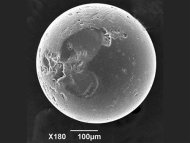

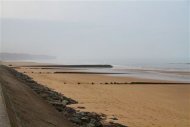

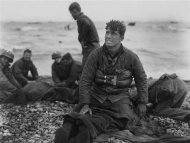
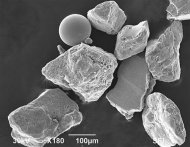
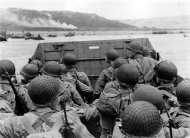


.jpg)


